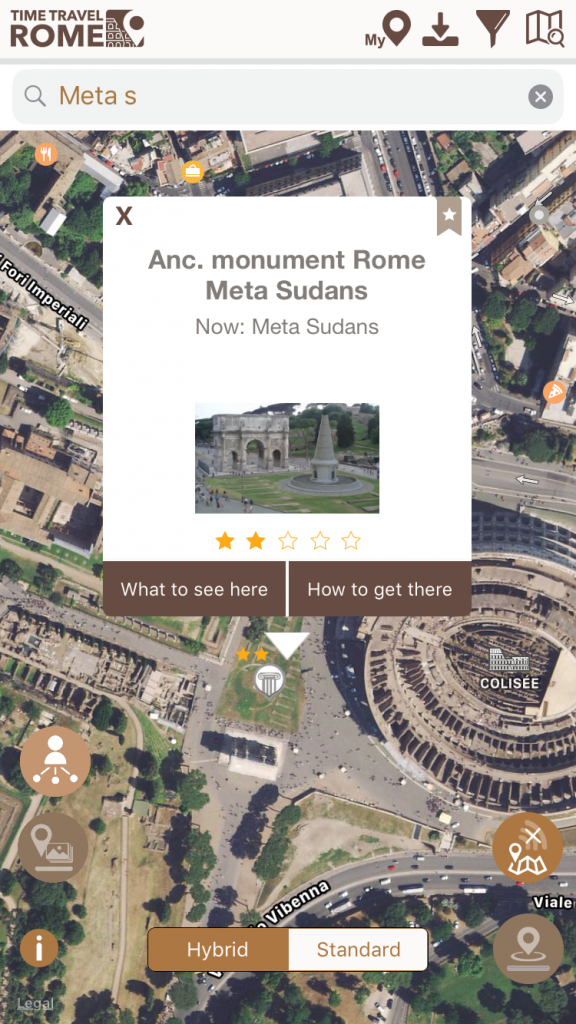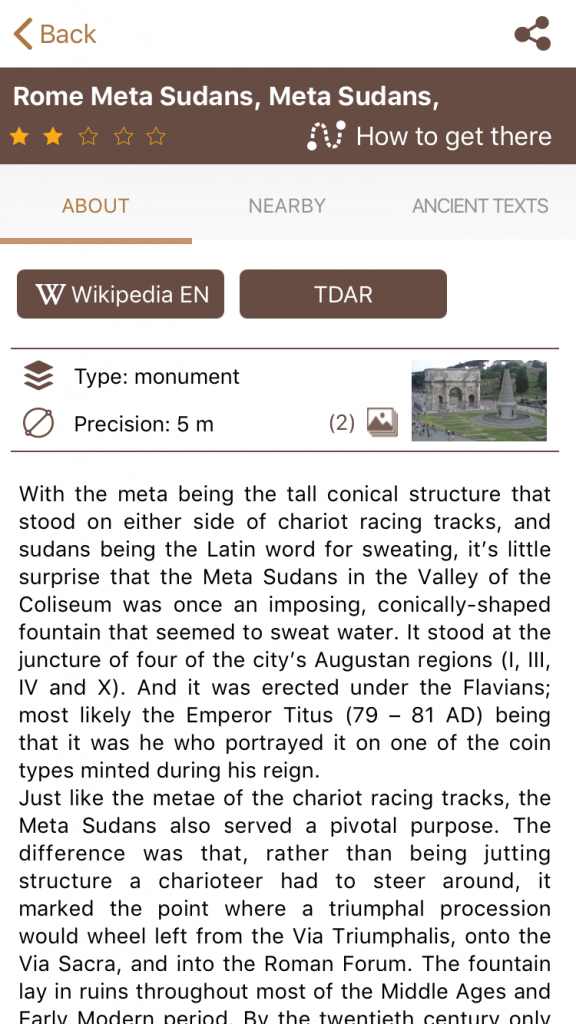Meta Sudans: meaning and significance
“Meta” was a tall conical structure that stood on either side of chariot racing tracks, while the Latin word “Sudans” stands for sweating. The Meta Sudans in the Valley of the Coliseum was once an imposing, conically-shaped fountain that seemed to sweat water. It stood at the juncture of four of the city’s Augustan regions (I, III, IV and X). Just like the metae of the chariot racing tracks, the Meta Sudans also served a pivotal purpose. The difference was that, rather than being jutting structure a charioteer had to steer around, it marked the point where a triumphal procession would wheel left from the Via Triumphalis, onto the Via Sacra, and into the Roman Forum.

Meta Sudans history
It was long believed that Meta Sudans was built under Flavians, together with other great monuments that included Coliseum. Indeed, the fountain was built on the newly created piazza besides Coliseum, where parts of the Nero’s Domus Area once stood. However, excavations conducted in 2002 have proven that the new fountain was not entirely new: it was actually a reconstruction of an earlier fountain built under Augustus. Archeologists found remains of the earlier fountain six meters below Met Sudans built later by Flavians. The size of the original Augustus fountain was not big, just 4×5 meters, but it had the same conical shape that the later structure had and it was located nearly at the same place.
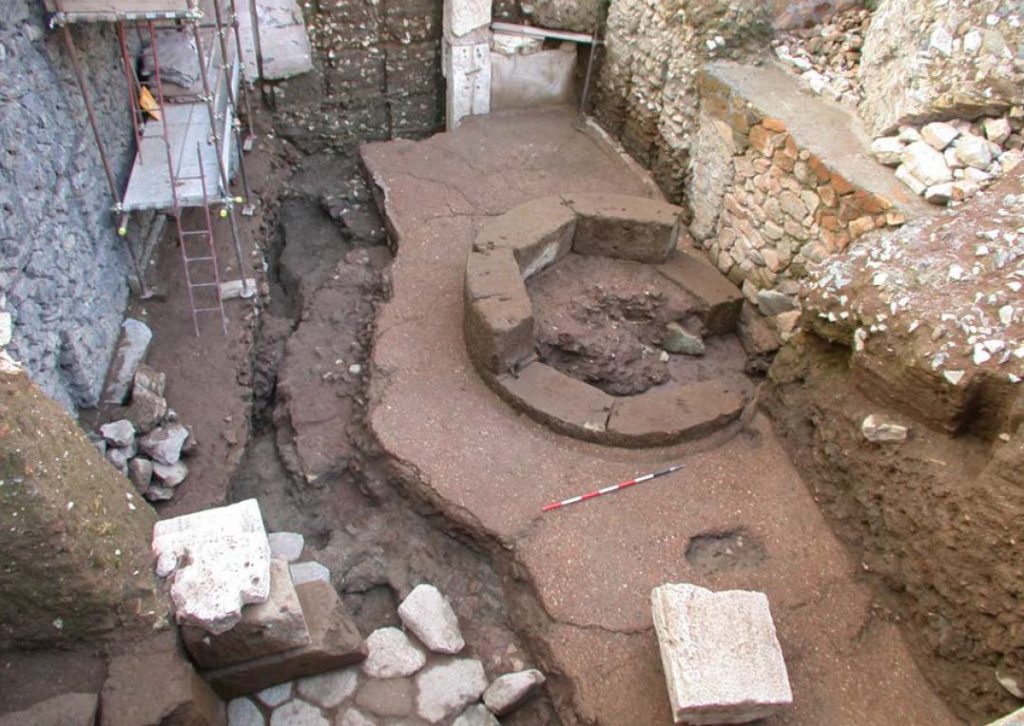
Besides its spatial importance, Meta Sudans built under Augustus possibly had some religious connotation: its shape reminds the Apollo’ baetyl, a sacred stone associated with the cult of Apollo. Augustus regarded Apollo as his patron therefore the construction of a fountain of this conical shape was probably intentional.
There are no visible remains of the Augustus’ fountain and the Meta Sudans fountain whose remains are visible today was built during the late first century by Flavian Emperors: Vespasian, Domitian and Titus. Flavian Emperors transformed the area formerly occupied by Nero’s Domus Area into a public place with imperial monuments built on it, including the fountain. The re-building was necessary as the whole area was greatly impacted by two fires: the “great fire” of 64 AD and another one, in the 68 AD, that destroyed Capitolium. Vespasian launched the reconstruction of the Capitolium to portray himself as guardian of Roman traditions. He used money from the war with Judea to drain the man-made Nero’s lake, he started the construction of the Amphitheater (Coliseum) and other big works. Archaeological excavations have demonstrated that fountain’ construction started when the nearby Amphitheater works were well advanced i.e. under Titus. Ancient authors attributed the construction of Meta Sudans to Domitian, but it is likely that he has just finished works started by his elder brother Titus.
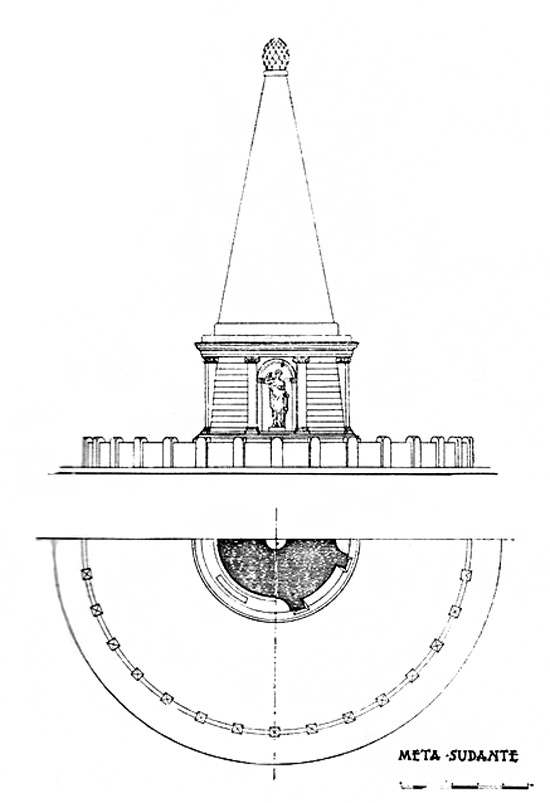
Illustration from the “Roma – Meta Sudans. I monumenti. Lo scavo. La storia”, by Sabina Zeggio and Giacomo Pardini published in the The Journal of Fasti Online.
Meta Sudans on coins
Meta Sudans can be seen on the famous sestertius struck under Titus in 81-82 AD. Sure, the main object here is Coliseum, as it was dedicated by Titus in 80 AD, but it is noteworthy that Meta Sudans finds its place on the coin too even if it was most likely unfinished at this date. Meta Sudans was the most prominent monument that Coliseum spectators used to see before and after circus shows, especially those who used the western entrance gate.
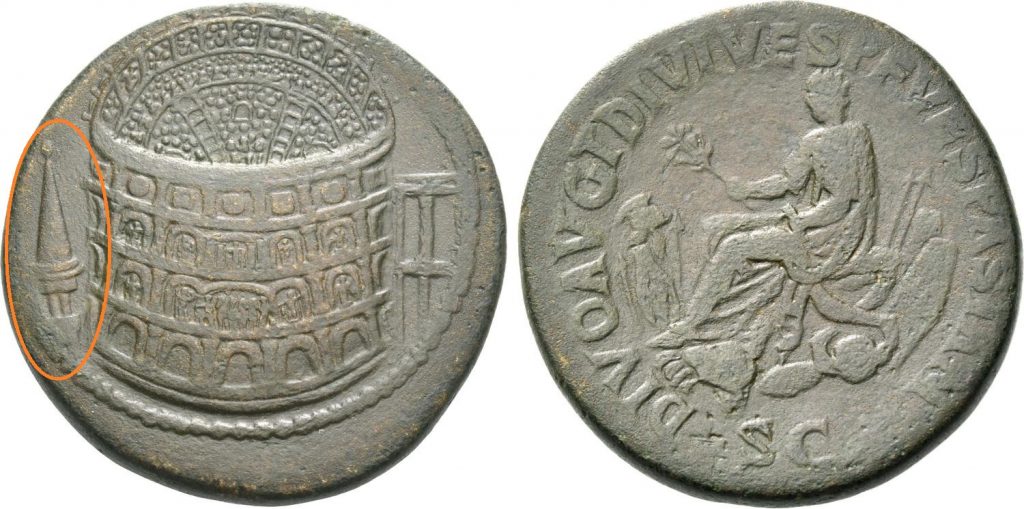
Sestertius struck under Titus, 79 – 81 AD. Obverse: View of the Colosseum, Meta Sudans and porticoed building. Reverse: Titus seated on curule chair, holding branch and roll. Source: Numismatica Ars Classica, Zurich. Auction 100, lot nb 460. Used by permission of NAC.
There is another known representation of Rome’s Meta Sudans on a dupondius struck under Titus. There are only a few such coins in existence and there are doubts whether they are authentic. The British Museum, which holds one of these coins, is unambiguous: it is a fake. The reverse is likely tooled from a statue of Spes or the coin was cast in Renaissance times, alongside other numerous fantasy coins depicting the Coliseum and Meta Sudans.
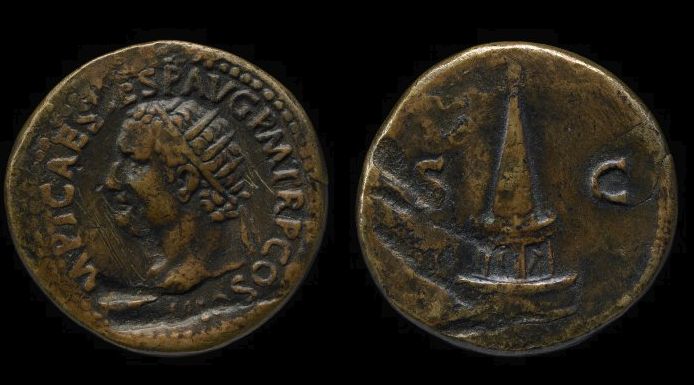
Meta Sudans appeared on coins struck in Rome for more than one hundred years. It is depicted on a rare medaillon struck under Severus in 224 AD. This coin was issued to commemorate the re-dedication of the Amphitheater in 224 AD, as it was partly rebuilt after a fire of 217 AD.
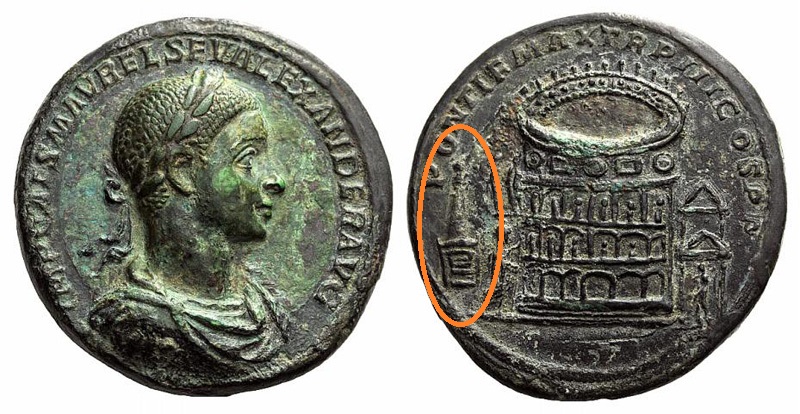
Severus Alexander. AD 222-235. Medallion, struck in Rome in 224 AD. Source: Classical Numismatic Group, www.cngcoins.com, used by permission of CNG.
Meta Sudans in other cities of the Empire
Meta Sudans in Rome has inspired the construction of similar fountains in other parts of the Empire. There was a conical fountain in Cuicul (now Djemila) in Algeria and two others in Corinth and Nikopolis in Epirus. The latter two fountains were represented on coins minted locally. The coin shown below was struck in Corinth under Hadrian in 117-138 AD. The existence of the fountain in Corinth is not attested from the archaeological point of view, so the coin is the only proof of its existence. A similar coin also with a conical fountain was struck in Nikopolis.
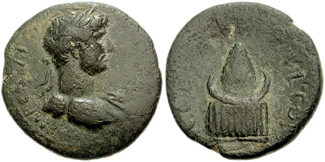
Meta Sudans, the Arch of Constantine and the Sun God
Meta Sudans played an interesting role in the positioning of the Arch of Constantine. This Arch was built between 312 and 315 AD to celebrate Constantine victory over Maxentius. It was constructed at the end of one of the longest stretches of the Via Triumphalis. The position of the Arch is not perfectly aligned to the Via Triumphalis axis: it is “twisted” some 7 degrees counter-clockwise. This is due to a mis-alignement between the ancient triumphal road and newer structures in the Colosseum Valley, which followed the contours of the Nero’s Domus Aurea. Flavians demolished the Domus Aurea, but they preserved the Neronian axis.
But the Arch was displaced even further, and this was because of the Meta Sudans itself. Indeed, its ancient alignment with the triumphal road meant that any arch in front of it would direct towards the center of the fountain. But Constantine didn’t want his triumphal troops to march into a fountain! His architects did two things: they built the Arch not over the road but a bit further north and they shifted the monument about two meters to the east. The displacement may seem minor, but it had spectacular visual effects. First, Meta Sudans was not visible anymore from the road; second, the Arch gate was now oriented straight to the Nero’ Colossus, transformed into Sol (Sun God) by Nero successors and placed there by Hadrian in 128 AD.
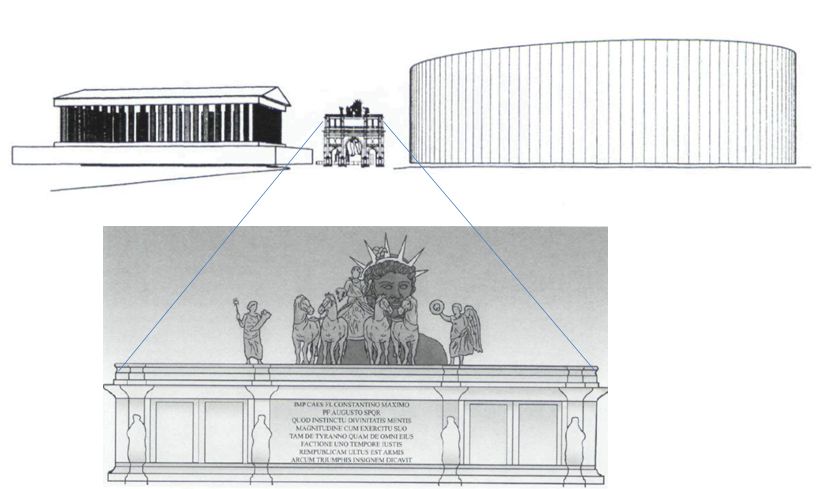
At some point the entire Colossus-Sol figure was visible through the central passageway – still not obstructed by Meta Sudans.
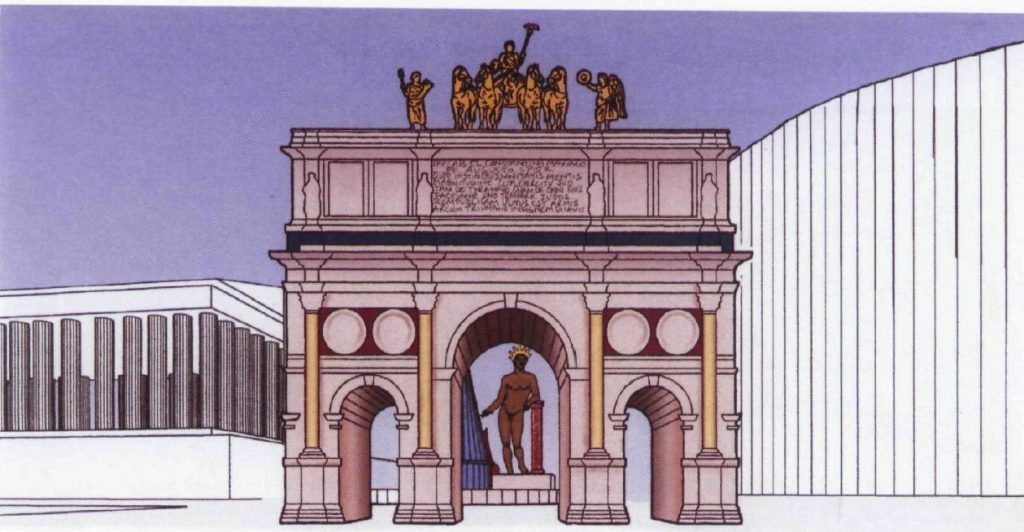
Source: “Framing the Sun: The Arch of Constantine and the Roman Cityscape” by Elizabeth Marlowe. Art Bulletin, June 2006.
What to see there now
In its heyday, the Meta Sudans would have towered 20 meters above the ancient street level. Even photographs of the nineteenth century show that the central foundation of the Meta Sudans had a height of at least nine meters. The monument was popular among Renaissance and later artists: there are many paintings where it can be seen.
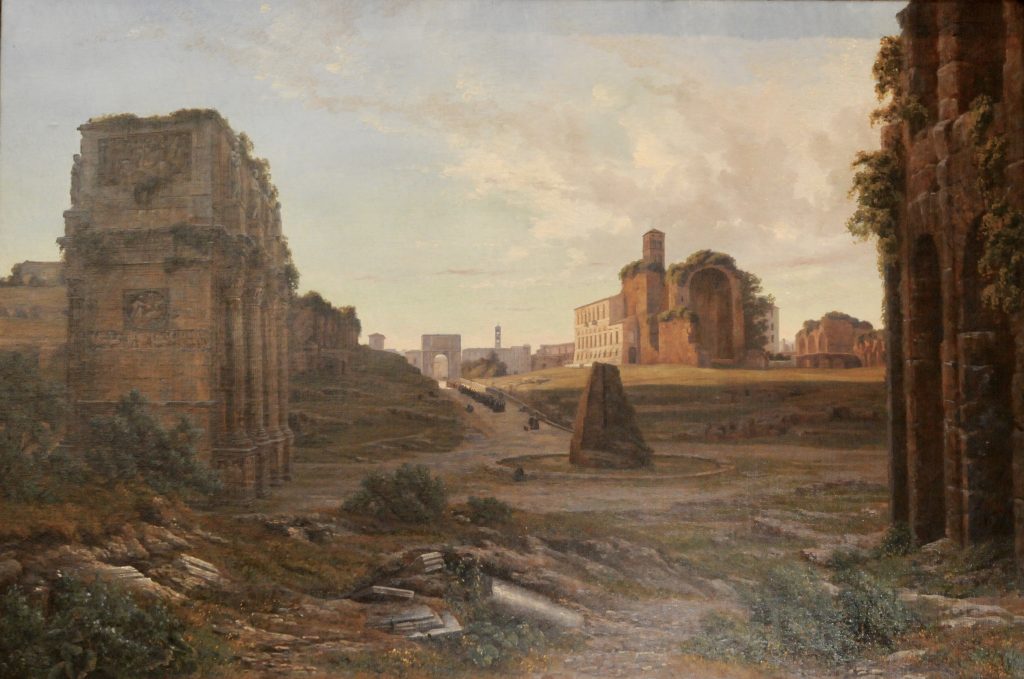
Sadly, however, all that remains of this once great structure today are its concrete foundations. By the twentieth century only the structure’s brick core remained, and even this was on borrowed time: in 1936 Mussolini had it hurriedly cleared to make more space for his fascist parades. Excavated in the 1980s and in early 2000’s, you can see Meta Sudans remains just jutting out from the grass on the Coliseum side of the Arch of Constantine.
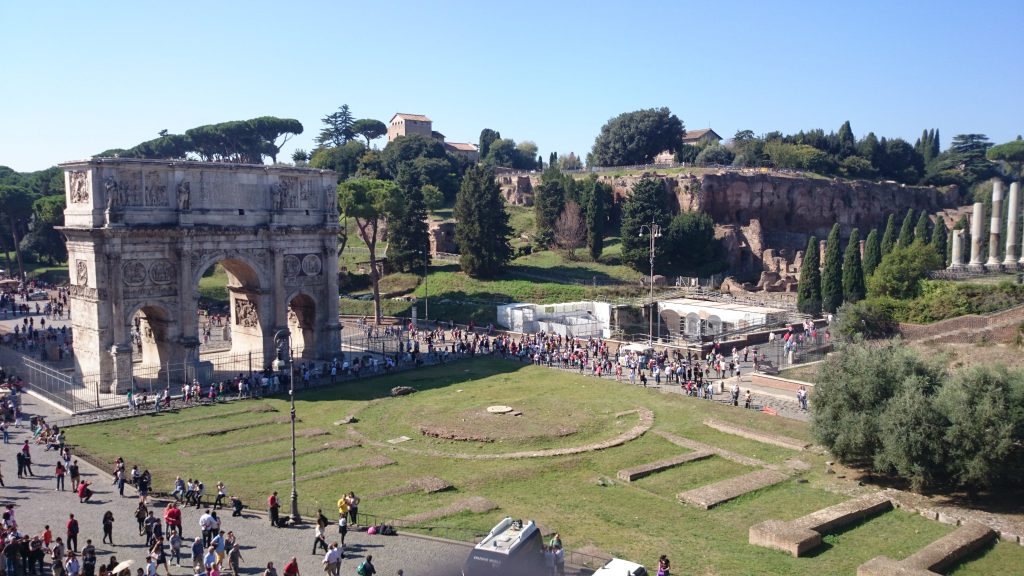
Meta Sudans on Timetravelrome app:
Meta Sudans is just one of the 195 sites in Rome that TimeTravelRome app shows on the map and describes in detail.
To find out more: Timetravelrome.
Authors: Timetravelrome. Parts of the text were edited by Alexander Medding.
Sources:
- “La meta sudans augustea: note per una sua ricostruzione”, THIASOS, 2013. Available online.
- “Roma – Meta Sudans. I Monumenti. La Scava. La Storia”. Sabina Zeggio and Giacomo Pardini. The Journal of Fasti Online. The digital copy is available online.
- “Reflections of Imperialism: The Meta Sudans in Rome and the Provinces”, Brenda Longfellow, The Art Bulletin, Vol. 92, No. 4 (December 2010), pp. 275.
- “Framing the Sun: The Arch of Constantine and the Roman Cityscape” by Elizabeth Marlowe. Art Bulletin, June 2006.
Header Photo: Arch of Constantine and Meta Sudans, by SuperKrzysztof licensed under CC BY-SA 4.0

